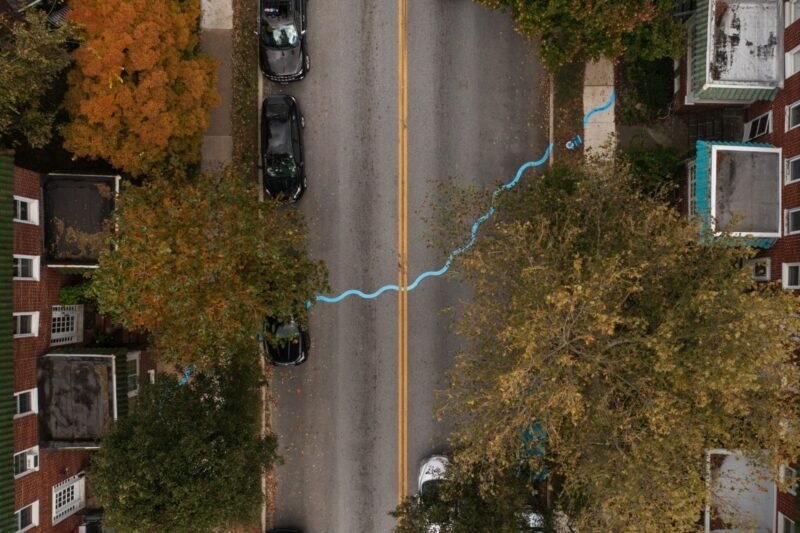Installations By Architects
 This year we’ve often been writing about all sorts of installations made by designers, by architects, by artists, or cross-discipline collectives, and even by ourselves. The installations we chose to write about were inspiring to us for several reasons. One of this reasons is beauty. Another reason is that some installations make you wonder about somebody’s amazing ideas and creative spirit unfolded in our collective space. A main characteristic of an installation is that it has no primary function. Oftentimes, one would not be able to live in an installation, to work in it, sleep in it or do whatsoever on a serious basis.
This year we’ve often been writing about all sorts of installations made by designers, by architects, by artists, or cross-discipline collectives, and even by ourselves. The installations we chose to write about were inspiring to us for several reasons. One of this reasons is beauty. Another reason is that some installations make you wonder about somebody’s amazing ideas and creative spirit unfolded in our collective space. A main characteristic of an installation is that it has no primary function. Oftentimes, one would not be able to live in an installation, to work in it, sleep in it or do whatsoever on a serious basis.
Installations need an explanation on an other level. For instance on the level of spatial, emotional, artistically or critical understanding of the world we’re living in. This is what the book ‘Installations by Architects: Experiments in Building and Design’ offers. The book, written by Sarah Bonnemaison and Ronint Eisenbach and published by Princeton Architectural Press, is an overview of all sorts of installations made in the last twenty five years. It’s a great selection, which means that all items are high quality installations of which some of them are well known, and others are completely new (to me at least). The book offers more than a collection of projects accompanied with basic information about them. It’s a true effort towards a better understanding of what installations mean and how we can understand them from an architectural point of view. This becomes most clear when reading the content table. Five different chapters focus on rather soft similarities within these collected projects. These themes, or areas of discussion, are tectonics, body, nature, memory and public space. This leads to a nicely written book and an intelligent understanding of the significance of the installation as an architectural expression.

Some of the featured projects are communicating directly with the audience (the readers of the book in this case). They’re funny, like a joke that is not told, and made as a construction in public space, or critical as a political statement, not expressed in parliament but on the streets of the city. Others trigger our will to experience new feelings and emotions, for example the Mute Room project by Thom Faulders, which is about the feeling to walk on a soft foam slippery slope. (No, this is not a funny game for TV celebrities.)
The Pink Ghost project by Périphériques Architects is counter-intuitive, but demanding action at the same time. The rebellious pink park is a real architect’s project, making an argument about the use of public space. Its a perfect temporary spatial intervention that doesn’t require any further explanation.

In the book’s conclusion, the different ways that architects use installations are grouped in three broad categories: (1) to experiment with both material and social dimensions of architecture, (2) to create conversations both with academics and general public, and (3) to educate future architects. Here the role of architecture is slightly exaggerated. Okay, I can believe that in most projects one of these three reasons has been put forward in a project description. But that’s the official declaration; a ghost story to make an installation fit as a project within the activities of an architectural office. While reading the book I notice another phenomenon: a lot of architects just want to be artists. Which by the way is completely good to me, as long as they make great art. In fact I don’t see so much a difference between the installations made by architects and installations made by artists, which this book doesn’t deal with.
The book concludes that installations have a special role in architectural practice.
“An installation is usually the end product for an artist, but for architects it can also be the preliminary step in an ongoing design process. Like paper projects designed in the absence of “real” architecture, installations offer architects another way to engage in issues critical to their practice. Direct experimentation with architecture’s material and social dimensions engages the public around issues in the built environment that concern them and expands the ways that architecture can participate in and impact people’s everyday lives.”
This point of view makes this book a typical architecture book. Finally, it deals with the role of the architect in our society. This stresses also the current ‘state of literature’ in the world of architecture: namely to constantly discuss what the role of architecture can be, should be, or would be. Since Rem Koolhaas’ early writings, it’s apparently ‘bon ton’ to rethink the position of the architect in a societal context. While, in fact, architects are never truly educated to rethink anything in a social context. Architects try to build beautiful buildings while expressing their understanding of design, and physical calculations. I’ve never seen a building being important in a revolution.
‘Installations by Architects’ contributes to this ‘position of the architect’ discussion, which means that the book is predominantly interesting to read for architects. And that could be considered a pity, because installations do appeal to a huge group of people. The fun dimension, which somehow is linked to installations, is maybe underexposed. While to me the fact that most installations are just hilarious, is good enough. The brilliance of the artist lies in the capacity to convince others to do something with his crazy ideas. This brilliance is exposed in this book. A book about installations made by architects who want to make art.
Installations by Architects: Experiments in Building and Design (2009)
Sarah Bonnemaison, Ronit Eisenbach
Princeton Architectural Press
7.5 x 10 inches (19.1 x 25.4 cm), paperback, 192 pages



